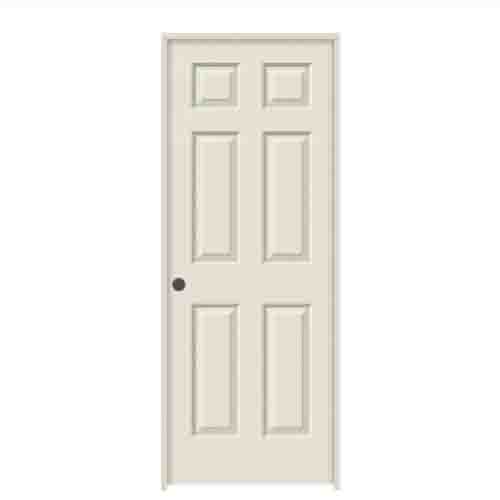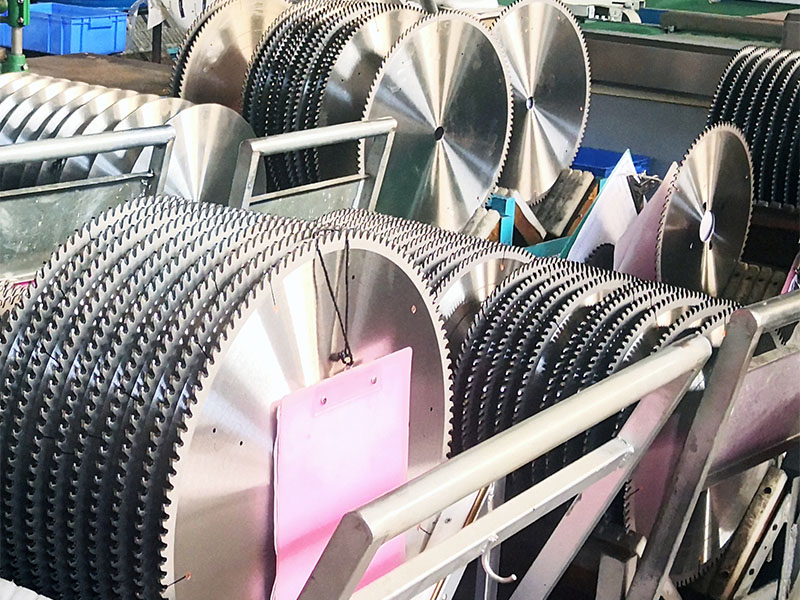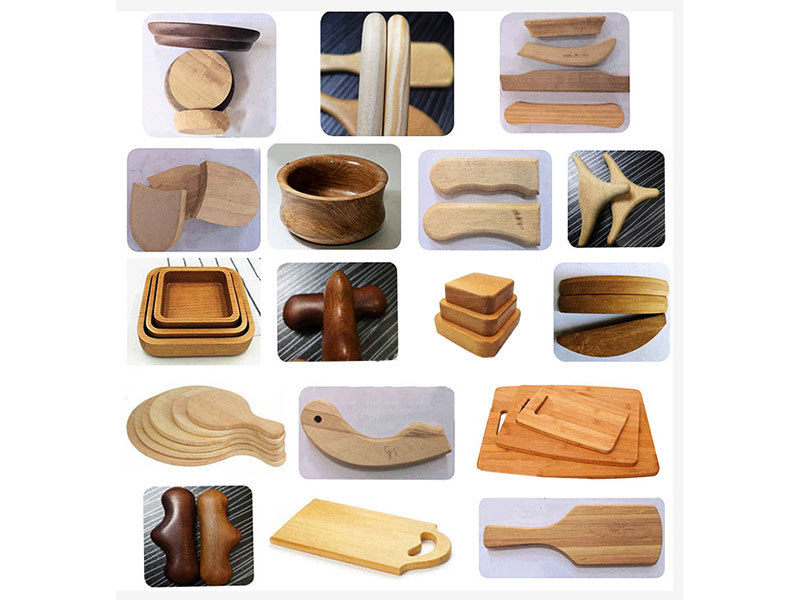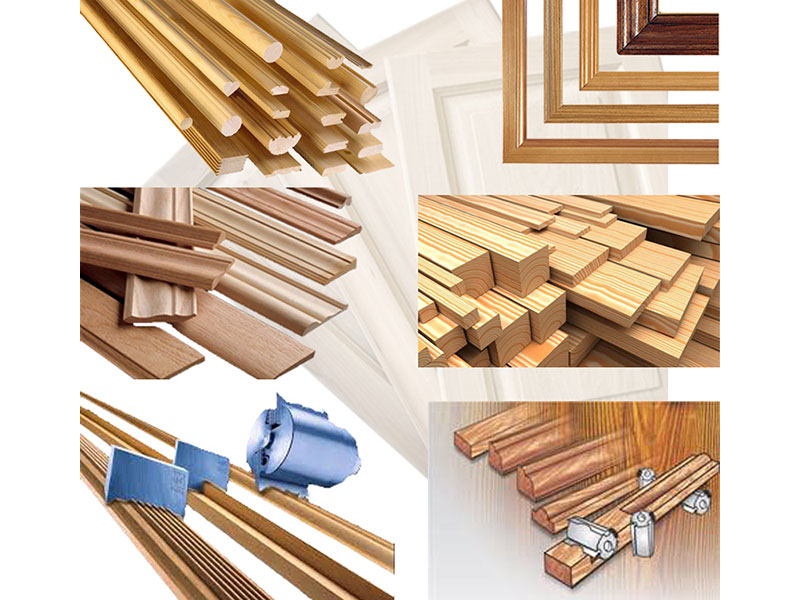
Process flow of door manufacturing machines
1. Timber cut to length
(1) The texture of the tree species used in the same product of various types of wooden doors and windows should be similar, and there should be no obvious difference in the tree species of the same glue assembly.
(2) The partial decoration of the appearance of the product is not restricted by a single material.
(3) The moisture content of the selected wood should be no more than 12%. In high humidity areas and high temperature months, the allowable value of moisture content can be slightly larger, but it should not be greater than the local annual average moisture content.
(4) Insect-eaten wood can only be used after insecticidal treatment.
(5) No decayed material shall be used on the outside. The slightly decayed area of the internal or enclosed materials shall not exceed 15% of the area of the part. The depth shall not exceed 25% of the thickness of the plate.
(6) The exterior materials must not have resin capsules.
(7) Products whose main force-bearing parts have a twill degree of more than 20% shall not be used.
(8) The knots on the board are divided into live knots and dead knots. Some products that reflect the natural texture can use boards with live knots. The area should be controlled. The width of the articulated joint does not exceed 1/3 of the width of the visible sheet material. The diameter does not exceed 12mm, and the structural strength and appearance of the product will not be affected after the repair process. It can be used.
(9) Other minor material defects. Such as cracks (except through cracks), blunt edges, etc. should be repaired, and can be used without affecting the structural strength and appearance of the product.
2. Mechanized wood processing
(1) Mechanized production: The machine takes the place of people, and the production is balanced according to the accurate size, shape and surface finish.
(2) Control the machining allowance: process the wool into wooden door parts that meet the design requirements in terms of shape, size and surface quality, rationally use and save wood, and control the machining accuracy to determine the machining allowance.
(3) Reduce power consumption: make full use of the production capacity of the equipment, ensure the processing quality of parts (processing accuracy, surface finish), and realize the continuity and automation of wooden door production.
The coating process used in the mechanized production of this set of wooden doors is: UV bottom + water-based surface.
Polishing of parts: Use 240# sandpaper to polish, so that the water chestnuts of all products are smooth and not irritating, and remove stains on the surface of the wood. Before coloring, the dust and dust must be blown off with an air gun to avoid contamination.
Background color: background color base material + color paste. After filtering, the contrast color plate is evenly sprayed and sprayed with a thin vacuum. The color must be consistent with the color plate. Indoor drying is required: ≥1 hour, baking: 40°C, 30 minutes .
Wipe Gris: Gris main agent + color paste, wipe with a rag reference color board, and then blow out the Gris of the inner corner and the craft seam with the air nozzle, sweep it evenly with a brush, dry at room temperature for ≥1 hour, Baking: 35-45°C, 30 minutes (not less than 2 hours at room temperature, otherwise it will have poor adhesion and cause serious consequences such as paint peeling).
Roller coating/spraying UV primer.
Sanding: The details of the parts before assembly are lightly sanded and smoothed with 400 mesh or 600 mesh sandpaper.
After finishing the UV bottom process, the parts are assembled mechanically.
1. In order to ensure the door leaf assembly structure, the explosive dowel assembly process is adopted to ensure the connection strength of the parts.
2. The door panels are polished and painted separately, using the main and auxiliary split structure process.
3. When assembling, pay attention to solving the problem of timing cutting and chipping.
(1) The texture of the tree species used in the same product of various types of wooden doors and windows should be similar, and there should be no obvious difference in the tree species of the same glue assembly.
(2) The partial decoration of the appearance of the product is not restricted by a single material.
(3) The moisture content of the selected wood should be no more than 12%. In high humidity areas and high temperature months, the allowable value of moisture content can be slightly larger, but it should not be greater than the local annual average moisture content.
(4) Insect-eaten wood can only be used after insecticidal treatment.
(5) No decayed material shall be used on the outside. The slightly decayed area of the internal or enclosed materials shall not exceed 15% of the area of the part. The depth shall not exceed 25% of the thickness of the plate.
(6) The exterior materials must not have resin capsules.
(7) Products whose main force-bearing parts have a twill degree of more than 20% shall not be used.
(8) The knots on the board are divided into live knots and dead knots. Some products that reflect the natural texture can use boards with live knots. The area should be controlled. The width of the articulated joint does not exceed 1/3 of the width of the visible sheet material. The diameter does not exceed 12mm, and the structural strength and appearance of the product will not be affected after the repair process. It can be used.
(9) Other minor material defects. Such as cracks (except through cracks), blunt edges, etc. should be repaired, and can be used without affecting the structural strength and appearance of the product.
2. Mechanized wood processing
(1) Mechanized production: The machine takes the place of people, and the production is balanced according to the accurate size, shape and surface finish.
(2) Control the machining allowance: process the wool into wooden door parts that meet the design requirements in terms of shape, size and surface quality, rationally use and save wood, and control the machining accuracy to determine the machining allowance.
(3) Reduce power consumption: make full use of the production capacity of the equipment, ensure the processing quality of parts (processing accuracy, surface finish), and realize the continuity and automation of wooden door production.
The coating process used in the mechanized production of this set of wooden doors is: UV bottom + water-based surface.
Polishing of parts: Use 240# sandpaper to polish, so that the water chestnuts of all products are smooth and not irritating, and remove stains on the surface of the wood. Before coloring, the dust and dust must be blown off with an air gun to avoid contamination.
Background color: background color base material + color paste. After filtering, the contrast color plate is evenly sprayed and sprayed with a thin vacuum. The color must be consistent with the color plate. Indoor drying is required: ≥1 hour, baking: 40°C, 30 minutes .
Wipe Gris: Gris main agent + color paste, wipe with a rag reference color board, and then blow out the Gris of the inner corner and the craft seam with the air nozzle, sweep it evenly with a brush, dry at room temperature for ≥1 hour, Baking: 35-45°C, 30 minutes (not less than 2 hours at room temperature, otherwise it will have poor adhesion and cause serious consequences such as paint peeling).
Roller coating/spraying UV primer.
Sanding: The details of the parts before assembly are lightly sanded and smoothed with 400 mesh or 600 mesh sandpaper.
After finishing the UV bottom process, the parts are assembled mechanically.
1. In order to ensure the door leaf assembly structure, the explosive dowel assembly process is adopted to ensure the connection strength of the parts.
2. The door panels are polished and painted separately, using the main and auxiliary split structure process.
3. When assembling, pay attention to solving the problem of timing cutting and chipping.




